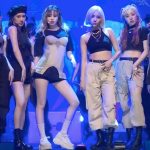Table of Contents

The biggest question surrounding the live-action Mulan, now on Disney+, is whether it’s done justice to the 1998 animated film. But some fans have a much more specific question on their minds: Will 2020’s Mulan still be queer?
If you’ve never really thought of Mulan as a queer film, that’s okay. It does, after all, feature a heterosexual romance between its crossdressing title character and the military leader whose battalion she joins after disguising herself as a boy. But for many queer audiences, Mulan is a seminal queer narrative — and it’s hardly the only Disney film to claim that honor. Throughout the pantheon of Disney films, generations of queer Disney fans have found stories and characters that mirror themselves and their experiences. These films and characters arguably comprise the “queer canon” of Disney — and among them, Mulan is arguably one of the most significant.
Mulan’s struggle to accept her prescribed gender, her sexual and gender confusion when she’s trying to fit in with all of the “other” boys in her squad, are classic hallmarks of the identity struggles that countless queer and transgender teenagers face — especially in situations where they’re expected to conform to rigid gender roles.
The introspective character ballad, “Reflection,” with its famous query, “When will my reflection show who I am inside?” can easily be read as a transgender anthem, and even includes a reference to “passing,” a crucial concept in trans communities. What’s more, in what seems to be a sly reference to the public discourse around queer and trans identity in the ’90s, a character claims that if Mulan is allowed to crossdress, “traditional values will disintegrate!” Then there’s the trope of the crossdressing hero getting entangled in a sexually confusing romance, a plot that’s been used to inject queerness into stories since Shakespeare and beyond.
Disney, with its famous reticence toward depicting openly gay characters almost certainly didn’t intend to produce an overtly gay narrative in Mulan. Until this year’s Onward, a Pixar film, Disney didn’t have any textually queer characters in its films. No queer sidekicks were present, let alone a main character. Yet Disney narratives have long been tied to the queer community, partly by design. As Sean Griffin’s book Tinker Bells and Evil Queens notes, Disney has long targeted gay audiences — and partly because queer audiences are experts at co-opting ostensibly straight narratives for themselves.
“The idea that lesbians and gay men could be watching Disney and using the texts (films, TV shows, theme parks, records, etc.) to further a definition of their sexuality is initially stunning and provocative,” Griffin wrote.
“Historical evidence indicates that lesbians and gay men have read Disney artifacts from a non-heterosexual viewpoint throughout the company’s history … as long as evidence showed that homosexual audiences were understanding Disney through a ‘gay sensibility,’ then a relationship existed whether Disney approved of it or not.”
The reason queer audiences have gotten so good at this co-opting is that when it comes to queer cinema, queer and transgender stories are frequently interpreted through subtextual readings of ostensibly straight or cisgender narratives. Often these readings are inserted or hinted at intentionally in the film’s margins, in a practice known as queer “coding.” This extrapolation of queer subtext is so commonplace that much of what we consider to be the queer cinema “canon” are films whose queer readings have had widespread cultural influence, even if they themselves aren’t textually queer. See, for example, the widely established queer readings of films like Bride of Frankenstein or the intentionally queer-coded Rebel Without a Cause.
Within the animated Disney canon, these kinds of readings can be found everywhere. We can pick out repeated tropes and themes that allow us to describe films and characters as queer-coded. Disney’s plots frequently involve characters somehow undergoing a magical transformation, outcast because of their differences, and yearning to find their place within a loving society — all themes that can easily serve as queer and trans allegories or as “a queer-studies crash course.”
Viewers frequently read vintage Disney films like Cinderella, Peter Pan, Pinocchio, and Dumbo as containing queer and/or trans metaphors, and the same goes for newer films like Lilo and Stitch and Tangled, just to name a few. Of course, most of these stories existed before Disney’s versions, but the Disney versions helped popularize their narratives as well as strengthen their queer subtext.
At the same time, Disney’s villains, in general, have nearly all been queer-coded through troubling negative queer stereotypes. The male villains — villains like Sir Hiss and Prince John from Robin Hood; Ratigan from The Great Mouse Detective; Aladdin’s Jafar; The Lion King’s Scar; Pocahontas’s Governor Ratcliffe; Hercules’s Hades; Dr. Facilier from The Princess and the Frog; the list goes on — are typically variants of campy, overly posh, effeminate men whose effeminacy is a cause for suspicion and concern, a reason to distrust them. The one notable exception to this rule is Beauty and the Beast’s Gaston, a villain intentionally designed to be so manly that he becomes inherently homoerotic. (Observe, for example, how “the gay Gaston” is just … Gaston.)
Meanwhile, female Disney villains tend to fall into two general categories. The first is full of campy drag queen variants, like Cruella De Vil, The Rescuers’ Medusa, or The Little Mermaid’s Ursula (who was modeled after actual drag icon Divine). The second contains cold, frigid types — think Cinderella’s stepmother, the queen from Snow White, Gothel from Tangled, or Maleficent — who all fall into the negative cinema stereotype of the predatory older woman who’s become toxically obsessed with a beautiful young woman.
Within this rather broad and complicated range of representation, queer Disney fans have crafted their own subversive and celebratory readings. Villains regularly become gay icons; Disney princes are frequently reframed as gay men; and so many people have read Frozen’s Elsa as queer that the push to give her a girlfriend has become a prominent media narrative around that franchise.
Elsa in particular, as well as reimagined characters like Maleficent and Jafar in Disney’s recent live-action updates, all represent a definitive recent shift away from the flamboyant queer villains of Disney’s past. It’s a shift that’s generated mourning among viewers over the loss of such sassy and colorful characters, even while they recognize that such stereotyped queer coding was full of problems. Disney’s pivot away from negative tropes hasn’t exactly been smooth, however; recall the jubilant headlines around 2017’s Beauty and the Beast live-action redux, which promised that Josh Gad’s updated version of Le Fou, Gaston’s fumbling sidekick, would be Disney’s first definitively queer character. Yet his on-screen queerness was reduced to a quick shot of him dancing with a man, which was barely one second long.
It’s understandable, then, that some viewers might be nervous when it comes to how queerness will manifest in the updated Mulan. The new film already deviates from the original in other ways — it’s lost most of the songs, removed many of the comical aspects, and even jettisoned the original love story. But whether or not the animated character retains her (or his) queer sensibility when transferred into live-action form, the original Mulan remains a queer cinema staple.
Alongside Mulan, here are the films we believe are the queerest in the Disney canon. Notably, all of these films, most of which are animated, come from after the “Eisner era” of Disney films, known as the “renaissance” that began with 1989’s The Little Mermaid under former Disney CEO Michael Eisner.
It’s probably not a coincidence that several of these films involved Howard Ashman, a gay musical lyricist who co-wrote the scores to The Little Mermaid and Beauty and the Beast and shaped the story concept of Aladdin before his death in 1991. Ashman’s imprint on the Disney canon reminds us how much more meaningful it is when queer creators get to put versions of themselves onscreen — and allow queer viewers to glimpse their own reflections in the movies they love.
Robin Hood (1973)
[embedded content]
Numerous older Disney films are certainly open to queer readings — *taps button reading “Ask Me About My Queer Reading of Pinocchio”* — but let me hazard a queer reading of Robin Hood, my favorite Disney movie as a kid.
Disney took the Robin Hood story and filled it with anthropomorphic animals, then didn’t bother doing heavily sexed presentations of those animals, unlike, say, Lola Bunny in Space Jam. This gives the film a strangely androgynous society, where you mostly know a character is a man or a woman because they tell you they are and/or because of what they happen to be wearing at the time. And yet Robin Hood and his friends are fond of dressing up, of playing roles, of blurring the lines of identity, in a way that feels very queer. Identities are often messy!
What’s more, the film’s presentation of a lovable band of outcasts, living on the fringes of society and actively hunted down by the powers that be has numerous resonances with the ways that queer culture historically hid out on the edges of Western society. Robin and his friends long for a world where they are invited into mainstream society, while still getting to be their super cool selves, which they get when King Richard returns at the end of the film and he’s not just a lion but a True Ally.
Anthropomorphic animals allow for kids (and adults) to divorce themselves from who they are and consider just who they might actually be. Furries quite literally consider this question of the liminal space between identities, but everybody can find something to examine in cartoon animals. If you’re a little boy who has a crush on fox Robin Hood, maybe that leads you to accept yourself sooner. If you’re a little girl (that everybody thinks is a little boy) who loves to watch Robin pretend to be a woman fortune teller, maybe that leads you somewhere else.
Anthropomorphic animals allow us to see something just human enough to sympathize with, while allowing us just enough of a remove to question everything about ourselves. As the classic Disney movie most full of anthropomorphic animals (at least until Zootopia), Robin Hood belongs in the queer Disney canon. —Emily VanDerWerff
The Little Mermaid (1989)
[embedded content]
There are numerous reasons to include The Little Mermaid in the queer Disney canon. To begin with, there’s Ursula, a flamboyantly campy villain who lives to be over the top. You could imagine her as a drag queen, as a particularly revolutionary lesbian who longs to destroy the cis-heteronormative patriarchy, or as a Harvey Fierstein character. And that’s before you get to the fact that she was modeled on Divine, the drag performer who worked extensively with queer cinema icon John Waters.
But forget Ursula! We know about Ursula! I just told you about Ursula! Let’s talk Ariel, the heroine of the film, one of the core Disney princesses, and a bastion of compulsory heterosexuality.
Or is she?
Okay, textually, yeah, she’s just a half-girl/half-fish who longs to be all girl, and she falls in love with a handsome prince, and at the end, she gets married in a lavish wedding. She’s not particularly queer — unless you’re a trans woman.
Where many trans guys connect with Mulan, many trans girls connect with Ariel, the girl who will never be seen as a girl until she has a sea witch perform an elaborate transformation on her, then loses her voice the second she’s allowed to be herself. (Is this a metaphor for vocal dysphoria — wherein some trans people feel discomfort around the sound of their voice — or for the ways that trans women suddenly find themselves ignored and talked over after coming out, in ways their cis women counterparts are all too familiar with? Honestly, take your pick.
The Disney canon isn’t exactly full of princesses for a trans girl to latch onto. Mulan’s entry into masculine spaces is celebrated, for example, because women embracing traits strongly associated with masculinity is celebrated in fiction. But the inverse is rarely true — when’s the last time you saw a male-coded character celebrated for embracing traits strongly associated with femininity in a kids movie? So we trans girls have Ariel, but honestly, that’s fine. She’s fun, she’s feisty, and “Part of Your World” is about when you really want to sit with the girls in your class at lunch but they won’t let you. I sing a mean “Part of Your World.” Ask me sometime at karaoke. —EV
Beauty and The Beast (1991)
[embedded content]
There are a few characters in the Disney canon, like Beauty and the Beast’s Gaston, who are seen as homoerotic paragons. I’d also argue that flamboyant candelabra Lumiere is, despite his entanglement with the French feather duster, a Kinsey 5.
But perhaps the most heartbreaking gay reading of Beauty and the Beast involves the story of the Beast himself.
The Beast’s curse to live as the reviled monster forever if he can’t find love before his 21st birthday — was, according to director Bill Condon, who helmed the 2017 live-action remake, a way for original lyricist Howard Ashman to tell a story about his own struggle with AIDS.
“Specifically for him, it was a metaphor for AIDS,” Condon told Attitude magazine in 2017, around the release of the remake. “He was cursed and this curse had brought sorrow on all those people who loved him and maybe there was a chance for a miracle and a way for the curse to be lifted. It was a very concrete thing that he was doing.”
There’s also a moment where the townsfolk, blinded by their prejudice, declare “we don’t like, what we don’t understand / in fact it scares us / and this monster is mysterious at least.” That isn’t unlike the prejudice felt by gay men like Ashman, who was dealing with AIDS complications while writing the lyrics for the songs of the original animated movie.
On the surface, Beauty and the Beast is about finding true love, and seeing beyond appearances. But dig a little deeper, and the movie also delivers an important message about compassion and empathy, and extending love to marginalized people who society too often deems unworthy of it. —Alex Abad-Santos
The Lion King (1994)
[embedded content]
The Lion King’s Scar follows the shopworn trope of a gay-coded villain: He preens, flips his hair, saunters in ways that his very stiff brother Mufasa doesn’t. He loves to talk about succession and monarchy. And with regard to the latter, because he can’t even dream of defeating his brother when it comes to a test of masculinity and strength, Scar resorts to sabotage and subterfuge to ascend to the throne. His iconic song, “Be Prepared” could easily be called, “Listen Up, Fives, a 10 Is Speaking.”
Scar subverts the rules of order and the very precious Circle of Life.
On the one hand, Scar and many stereotypically portrayed characters like him feel like the byproducts of lazy and unimaginative writing (oh, wow another limp-wristed, gay-ish villain!). But on the other, Scar has been embraced by Disney fans, LGBTQ+ fans in particular, who see him as subversive and one of Disney’s greatest villains.
And it’s important to understand why.
Since gay people haven’t ever been allowed to be the heroes of Disney movies, no one can really blame us for taking our crumbs and appreciating the bombastic, oppositional, unapologetically queer villains like Scar. He may be a villain, but at least Scar is an architect of his own devious life.
The Lion King has a couple of less-villainous queer-coded characters in Pumba and Timon, Simba’s two nihilistic, adoptive gay dads. But even they don’t seem like they’re having half as much fun as Scar as he unleashes his dark vision everywhere the light touches. —AAS
Hunchback of Notre Dame (1996)
[embedded content]
Thematically, Hunchback is one of the queerest Disney films. As in the famed Victor Hugo novel upon which the Disney film is loosely based, the plot centers around a man whose physical deformity renders him a social pariah. Quasimodo has been brought up by an evil politician who’s confined him his entire life within the borders of the Notre Dame Cathedral. Judge Frollo’s actions are ruled by his own repressed sexual desires, which grow until they render him desperate and diabolical. Quasimodo is the only one who can unmask him and reveal his hypocrisy to the world.
A deeply controversial film at the time of its release because of its dark and cynical, even sinister view of organized religion, Hunchback is perhaps Disney’s most intense film. Every minute of it is crowded with beauty, from the stunning visuals to the beautiful, lush score by Alan Menken and Stephen Schwartz. And it’s completely suffused with the kind of towering emotions you’d expect from a story about two intensely passionate men who are both struggling to break free of their restraints in wildly different ways.
Frollo’s sexual hypocrisy and raging hatred of Esmeralda, the object of his desires, makes him the perfect allegory for modern-day homophobes. His story also doubles as the suffocating, debilitating nature of the closet itself. By contrast, Quasimodo is literally confined physically to the “closet” of the church, but his longing for freedom is soaring and desperate and inspiring. It prompts Disney’s best “I Want” song, which is also one of the gayest songs ever written, “Out There.”
In the song, after Frollo reminds him that the world will never understand his deviance, Quasimodo longs to have just one day to spend outside (the closet). He longs to “live like ordinary men” who are “heedless of the gift” of normalcy they have. He’ll remember his one moment of freedom, he claims, when he’s “old and bent.” It’s a whole Pride parade in one song. —Aja Romano
Mulan (1998)
[embedded content]
Is there a Disney movie with a queerer premise than “drag saves China”?
That’s the crux of Mulan, in which our heroine realizes, through pretending to be a perfect bride and pretending to be a perfect soldier and failing at both, that gender is ultimately performative. And her realization ultimately informs her plan of dressing Yao (Harvey Fierstein) and her fellow soldiers as women so they can bypass palace security and save China’s Emperor from the Huns.
Mulan’s signature song, “Reflection,” is about never getting to express who she really is, and always feeling like she must conceal and suppress who that person is. She pretends to be a man and enlists in the army to protect her ailing father.
Because the movie features an Asian female protagonist who bucks Disney princess tradition by being a fierce fighter, it’s easy to see how it resonates among a generation of young women and Asian Americans.
But Mulan also functions as an allegory of living in a closet, and the constant fear of being exposed and shunned by society for being who you truly are. What Mulan doesn’t know is that her greatest strengths are the very characteristics she’s been urged to hide — her intellect, her quick thinking, her ingenuity — and in the end they’re key to saving her country. And her story is arguably (with competition from Frozen) the most empowering coming out tale Disney has ever told. —AAS
Maleficent (2014)
[embedded content]
Because queerness has historically been an act of deviance and subversion, queer villains have always been a cinematic mainstay — which means that reclaiming a villain, and villainy itself, is itself a common act of queer subversion. If only for this reason, Maleficent is one of the gayest Disney films around. The live-action movie fully reclaims and softens the antagonism of one of Disney’s most popular villains, the ice-cold fairy-slash-dragon from Sleeping Beauty — which is itself one of Disney’s arguably queer-coded fairy tales.
In the new version, Angelina Jolie’s Maleficent, betrayed by her childhood love and wonderfully, campily bitter about it, fixates on his daughter Aurora. But unlike the original Charles Perrault fairy tale or the Disney legacy film, Maleficent grows to love Aurora, so much that it’s her kiss, not the handsome prince’s, that finally awakes Sleeping Beauty in the end. It’s all very sapphic and decidedly non-maternal.
The updated take on Maleficent is perhaps one of Disney’s most obviously innocent outcasts, which makes her story feel at times painfully queer. The moment early on in the film when someone she loves betrays her by slicing off her wings — ostensibly in order to “save” her — comes off like an excruciating form of conversion therapy. And just like all conversion therapy, it fails, and Maleficent emerges from the moment of trauma stronger, angrier, smarter, and ready to be gay, do crimes. —AR
Frozen (2013)/Frozen 2 (2019)
[embedded content]
Elsa is perhaps the most famous character in the queer Disney canon, because so far, the Frozen films have gone out of their way to avoid saying she’s straight. They haven’t said that she’s queer, but her lack of a dude love interest across the two Frozen films has caused plenty of queer folks to claim her as the Disney princess for them.
The queer reading seems, to some degree, accidental in the first film. There, the “true love” story is between sisters, an intentional subversion of the Disney standard. Because of the sister story being the focus, Elsa doesn’t have a handsome doofus to follow her around and try to win her love, unlike her sister Anna, who finds herself at the center of a genuine love triangle.
Look beyond the text of the film, and there’s plenty to suggest Elsa as subtextually queer. Her parents attempt to get her to hide her magic powers (perhaps a metaphor for queerness) deep down. When those powers emerge, she is greeted with horror by society. Also, “Let It Go” is all about what happens when something hidden deep within you bursts forth, and it feels so great, you have to sing about it.
Frozen 2 all but drags Elsa’s queerness into the text, though it chickens out at the last minute. She follows the voice of a mysterious woman into a strange forest where nothing is as it seems; there, she meets a fetching young woman named Honeymeron. When they chat around the fire later, there’s a slight undercurrent of romance. Elsa ultimately heads off into the unknown in search of hidden family secrets, but at the film’s end, she chooses to stay in the mysterious forest with these people who seem to know more about her than she does, one of whom is Honeymeron. You really don’t have to squint to give this a queer reading.
Many asexual folks also find representation in Elsa, who just doesn’t seem like she can be bothered with the whole elaborate ritual of dating and marrying and mating. Similarly, more than a few trans women see themselves in Elsa, because of the elaborate transformation into a much more badass version of herself she undergoes in the first film. Truly, Elsa contains multitudes, and if you’re looking for a Disney film where the queerness is almost canon, look no further than the Frozen duology. —EV
Help keep Vox free for all
Millions turn to Vox each month to understand what’s happening in the news, from the coronavirus crisis to a racial reckoning to what is, quite possibly, the most consequential presidential election of our lifetimes. Our mission has never been more vital than it is in this moment: to empower you through understanding. But our distinctive brand of explanatory journalism takes resources — particularly during a pandemic and an economic downturn. Even when the economy and the news advertising market recovers, your support will be a critical part of sustaining our resource-intensive work, and helping everyone make sense of an increasingly chaotic world. Contribute today from as little as $3.
Posts from the same category:
- None Found









